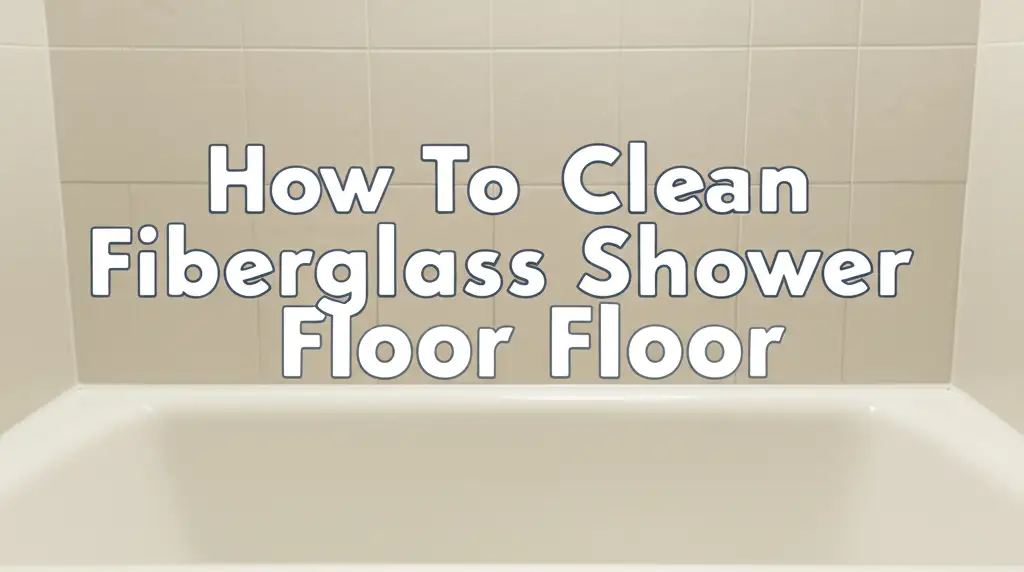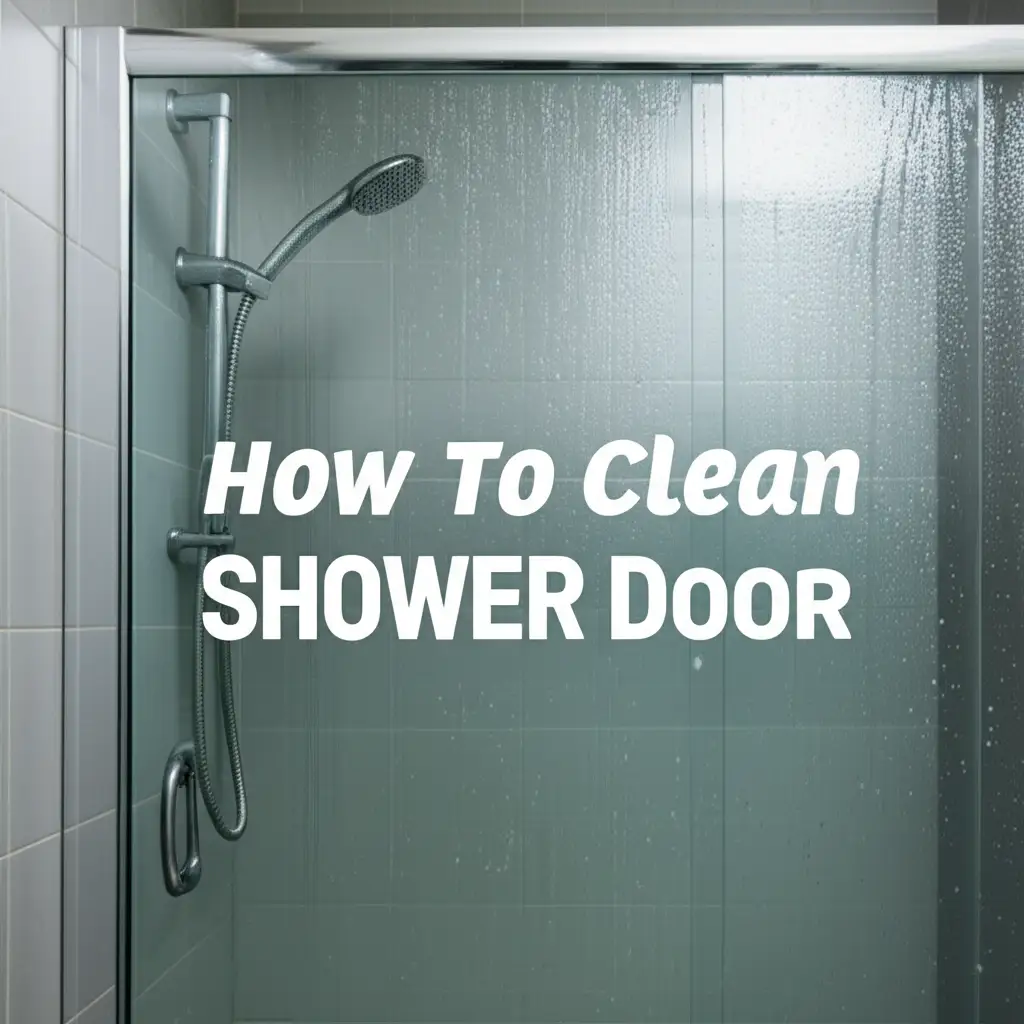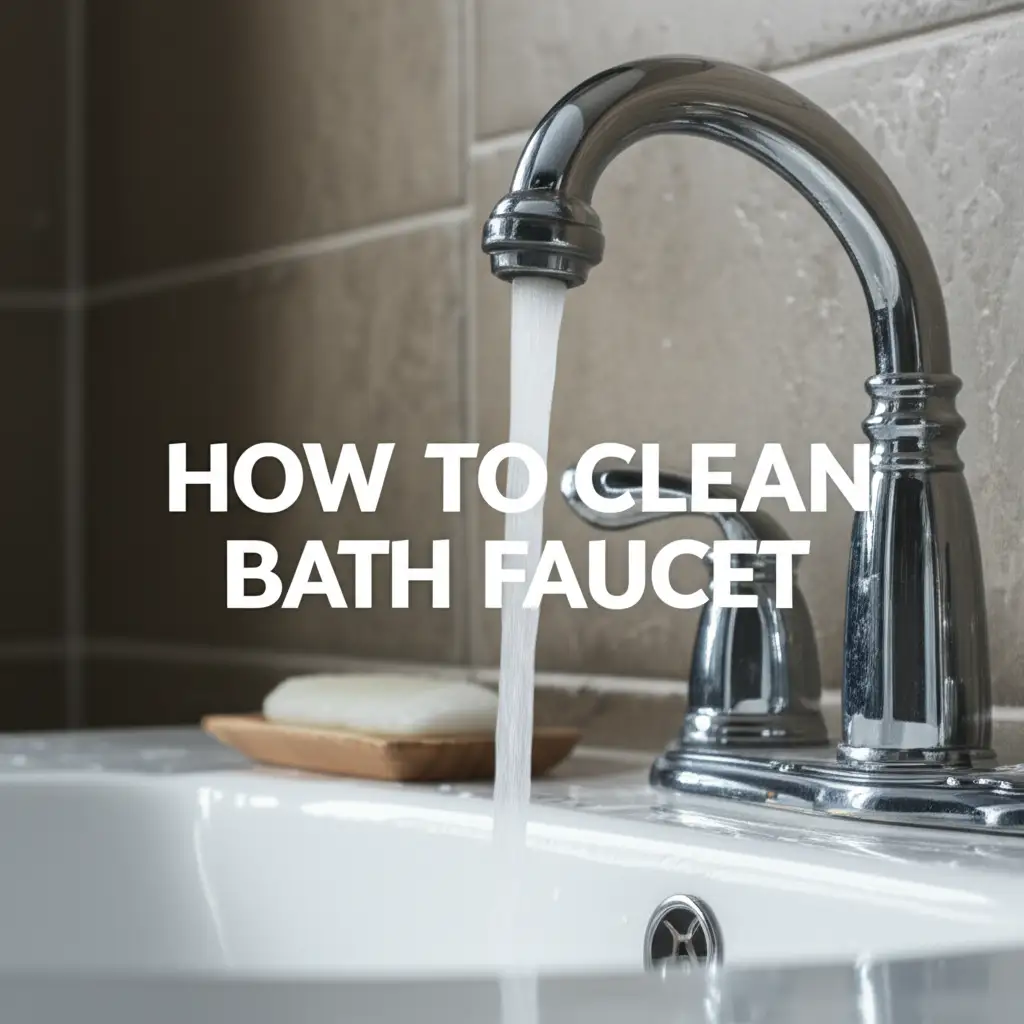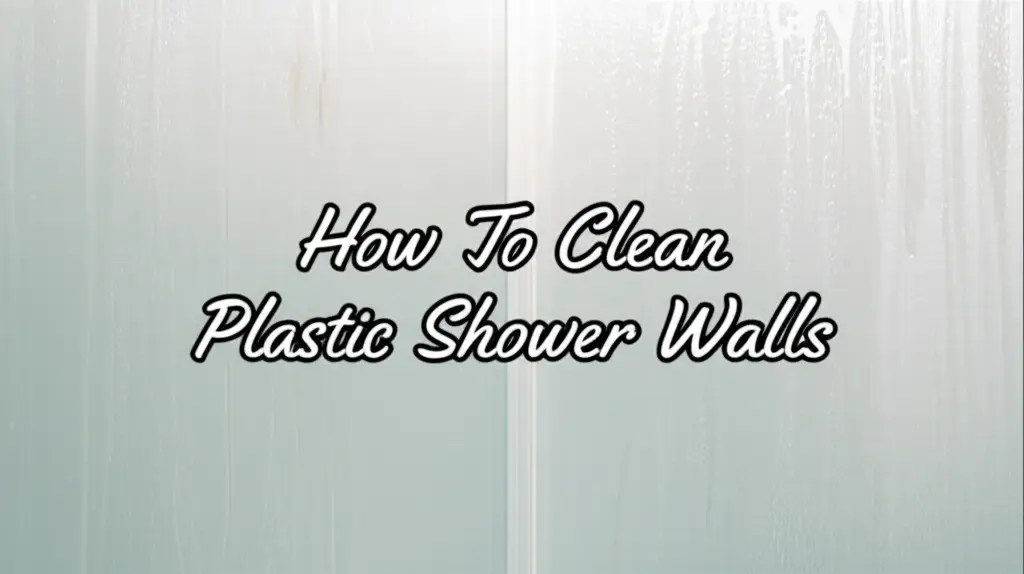· Bathroom Cleaning · 17 min read
How To Clean Fiberglass Shower Floor

Sparkling Clean: How to Clean Your Fiberglass Shower Floor
A clean shower floor makes your entire bathroom feel fresh. Fiberglass shower floors are popular for many homes. They offer durability and a sleek look. However, these surfaces can quickly accumulate soap scum, grime, and mildew. This happens especially with daily use. Cleaning fiberglass needs careful methods. You must use the right products. Strong chemicals or abrasive scrubbers can damage the surface. I understand the challenge of keeping your shower floor pristine. This guide will show you how to clean fiberglass shower floors effectively. We will explore gentle yet powerful techniques. You will learn to bring back the shine and freshness. This article covers everything from daily upkeep to stubborn stain removal.
Takeaway
Keeping your fiberglass shower floor clean is simple. You need the right tools and gentle methods.
- Always use non-abrasive cleaners and soft cloths.
- Address spills and scum quickly to prevent buildup.
- Regular cleaning prevents stubborn stains.
- Natural solutions like baking soda and vinegar are effective and safe.
To clean a fiberglass shower floor, use mild, non-abrasive cleaners. Apply the cleaner with a soft cloth or sponge. Let it sit for a few minutes. Gently scrub the surface. Rinse thoroughly with water. Dry the floor to prevent water spots and mildew growth.
Understanding Fiberglass Shower Floors: Why Gentle Care Matters
Fiberglass is a common material for shower floors. Manufacturers use glass fibers and resin to make it. This material is lightweight. It is also durable. Builders use fiberglass because it resists water damage. It is also affordable. Fiberglass surfaces are smooth. They often have a gel coat finish. This finish provides shine. It also offers protection.
However, fiberglass is not indestructible. It can scratch easily. Abrasive cleaners cause tiny marks. Over time, these marks dull the surface. They also make the floor look dirty. Harsh chemicals can strip the gel coat. This makes the fiberglass porous. Porous surfaces trap dirt and mold. This creates more cleaning problems.
We use our showers every day. Soap scum, body oils, and hard water minerals build up. Mildew and mold also grow in damp conditions. These contaminants stick to the fiberglass surface. They form unsightly stains. Understanding these properties helps you choose safe cleaning methods. You protect your investment. You also keep your bathroom hygienic.
Always prioritize gentle cleaning. This preserves your shower floor’s integrity. It ensures it remains beautiful for years. Proper care prevents costly repairs or replacements.
Essential Tools and Gentle Cleaners for Fiberglass
Gathering the right supplies makes cleaning easier. You need specific tools for fiberglass. Choose items that protect the delicate surface. Harsh scrubbers cause damage. They create scratches. Scratches trap dirt. This makes future cleaning harder. Always select non-abrasive options.
Here is a list of essential tools and gentle cleaners:
- Soft Cloths or Microfiber Towels: These materials are gentle. They absorb well. They will not scratch the fiberglass.
- Soft-Bristled Brush: A brush with soft bristles helps with textured areas. It works well on grout lines if your shower has any. Ensure the bristles are soft. Avoid stiff brushes.
- Sponge: A soft sponge is good for general cleaning. It applies cleaners evenly.
- Spray Bottle: This helps apply liquid cleaners. You can mix your own solutions.
- Rubber Gloves: Protect your hands from cleaners. They also provide a better grip.
- Mild Dish Soap: Basic dish soap works well for light cleaning. It cuts through grease and soap scum.
- White Vinegar: This is a natural disinfectant. It dissolves mineral deposits. It is excellent for hard water stains.
- Baking Soda: Baking soda is a gentle abrasive. It removes stains. It also deodorizes.
- Hydrogen Peroxide: This helps remove mold and mildew. It also brightens surfaces.
- Commercial Fiberglass Cleaner: Look for products specifically for fiberglass. Choose non-abrasive formulas. Read labels carefully. Ensure they are safe for your shower.
Avoid using steel wool pads. Do not use abrasive powders. Stay away from harsh chemical cleaners. These include bleach or strong acids. Such products will damage the fiberglass finish. They can void warranties. With the right tools and gentle cleaners, your fiberglass shower floor will shine. You will keep it clean and protected.
Routine Cleaning for a Spotless Fiberglass Shower
Regular cleaning prevents major issues. It stops soap scum and grime buildup. Consistent habits keep your fiberglass shower floor looking new. I clean my shower floor regularly. This routine saves time and effort in the long run. It also ensures a healthier bathroom environment.
Follow these simple steps for routine cleaning:
- Rinse After Each Use: Quickly rinse the shower floor after every shower. This washes away soap residue and hair. It prevents buildup. Use your showerhead to rinse down all surfaces.
- Wipe Down: Use a squeegee or microfiber cloth to wipe down the floor. Do this after rinsing. This removes excess water. It prevents hard water spots. It also reduces moisture. Reduced moisture slows mildew growth.
- Weekly Mild Cleaning: Perform a more thorough cleaning once a week.
- Prepare a Solution: Mix a few drops of mild dish soap with warm water in a spray bottle. You can also use a commercial fiberglass cleaner. Ensure it is non-abrasive.
- Spray the Floor: Lightly spray the entire fiberglass shower floor with your solution.
- Gentle Scrub: Use a soft sponge or a soft-bristled brush. Gently scrub the surface. Focus on areas with soap scum. Do not apply too much pressure.
- Rinse Thoroughly: Rinse the floor completely with warm water. Ensure no soap residue remains. Leftover soap attracts more dirt.
- Dry Completely: Dry the floor with a clean, dry microfiber towel. This prevents water spots. It also keeps mildew from forming.
This routine cleaning takes very little time. It significantly reduces the need for deep cleaning. It protects your fiberglass surface. A clean shower floor adds to your home’s comfort. It provides a sparkling space for relaxation.
Deep Cleaning and Tackling Stubborn Stains
Even with routine care, stubborn stains can appear. These include persistent soap scum, mildew, hard water spots, and orange discoloration. Fiberglass shower floors need special attention for these issues. Strong chemicals can damage the surface. Gentle yet effective methods are key. I have faced many tough stains. I know the frustration they cause.
How to Remove Soap Scum from Fiberglass
Soap scum is a common problem. It builds up from body oils and soap residue. It creates a dull film.
- Vinegar and Dish Soap Method: Mix equal parts white vinegar and warm water in a spray bottle. Add a few drops of mild dish soap. Spray the entire affected area generously. Let the solution sit for 15-20 minutes. The acidity of vinegar breaks down the scum. The dish soap helps lift the grease. Gently scrub with a soft brush or non-abrasive sponge. Rinse thoroughly with water. Dry the surface.
- Baking Soda Paste: Make a paste with baking soda and a small amount of water. Apply the paste directly to the soap scum. Let it sit for 10-15 minutes. This creates a gentle abrasive action. Scrub gently with a soft sponge. Rinse well. This method works very well for tough spots. You can learn more about cleaning your shower with baking soda here.
Eradicating Mildew and Mold
Mildew thrives in damp, warm shower environments. It appears as black or pink spots.
- Hydrogen Peroxide: Mix one part hydrogen peroxide with two parts water. Spray this solution onto the mildewed areas. Let it sit for 10-15 minutes. Hydrogen peroxide is a mild bleach. It kills mold spores. Scrub gently and rinse. This method is effective and safer than bleach for fiberglass.
- Vinegar Spray: Undiluted white vinegar can also kill mildew. Spray it directly onto the affected areas. Let it sit for at least 30 minutes. Wipe away the mildew. Rinse well. The vinegar smell dissipates quickly.
- Baking Soda Scrub: For stubborn mildew, sprinkle baking soda over the wet surface. Gently scrub the area. Baking soda provides a mild abrasive action. It helps lift the mildew.
Combating Hard Water Stains
Hard water contains minerals. These minerals leave chalky white or reddish stains. They stick to surfaces as water dries.
- Vinegar Soak: Fill a spray bottle with undiluted white vinegar. Spray the hard water stains liberally. Let the vinegar soak for at least 30 minutes. For very tough stains, lay vinegar-soaked paper towels over the spots. This keeps the vinegar in contact longer. Scrub with a soft brush. Rinse completely. Vinegar dissolves mineral deposits effectively. This technique is similar to how you would clean hard water from shower glass.
- Lemon Juice: Lemon juice is another natural acid. It can remove hard water stains. Squeeze fresh lemon juice onto the stains. Let it sit for 15-20 minutes. Scrub gently and rinse. This leaves a fresh scent.
Eliminating Orange Stains
Orange stains often come from iron in water or certain bacteria. They can look unsightly.
- Vinegar and Baking Soda Paste: Create a thick paste using baking soda and a small amount of white vinegar. Apply this paste directly to the orange stain. Let it sit for 30 minutes to an hour. The chemical reaction helps lift the stain. Scrub gently with a soft sponge. Rinse thoroughly. This is a powerful combination for many tough stains.
- Commercial Rust Remover (Fiberglass Safe): Some iron stains are very stubborn. Look for a rust remover specifically labeled safe for fiberglass. Read the product instructions carefully. Always test it in an inconspicuous area first. Apply according to directions. Rinse immediately after the recommended time. You can find more detailed methods for orange stains in your shower here.
Always rinse your fiberglass shower floor thoroughly after deep cleaning. Ensure no cleaning residue remains. Dry the surface completely. This prevents new stains and maintains shine. Regular attention to these specific issues keeps your shower floor looking its best.
Special Care for Textured Fiberglass Shower Floors
Textured fiberglass shower floors offer safety. Their non-slip surface prevents falls. This texture provides grip. However, the tiny grooves and bumps trap dirt. They hold soap scum, grime, and mildew more easily. Cleaning textured surfaces requires different tools and methods. A flat sponge cannot reach into all the crevices.
Here are specific strategies for cleaning textured fiberglass shower floors:
- Choose the Right Brush: A soft-bristled brush is essential. It must fit into the texture’s small crevices. Nylon brushes or an old toothbrush work well. Do not use stiff wire brushes. These will damage the fiberglass.
- Use a Gentle Abrasive: Baking soda is an excellent choice. Its fine granules act as a mild abrasive. They scrub away grime without scratching.
- Baking Soda Paste Method: Wet the entire textured shower floor. Sprinkle baking soda generously over the wet surface. You can also mix baking soda with a little water to form a thick paste. Spread this paste over the textured areas.
- Scrub in Circles: Use your soft-bristled brush. Gently scrub the baking soda into the textured surface. Work in small circular motions. This helps dislodge trapped dirt and soap scum. Pay extra attention to high-traffic areas.
- Vinegar Rinse for Minerals: For hard water stains or mineral buildup in the texture, white vinegar is effective.
- After scrubbing with baking soda, spray undiluted white vinegar over the baking soda. It will fizz. This reaction helps break down stubborn deposits.
- Let it sit for 10-15 minutes.
- Scrub again gently with the brush.
- Thorough Rinsing: Rinse the textured floor extremely well. Ensure all baking soda and vinegar residue is gone. Residue can make the floor slippery or attract more dirt. Use your showerhead to rinse thoroughly. You can also use a bucket of clean water.
- Dry Completely: Drying is crucial for textured floors. The texture can hold moisture. This promotes mildew growth. Use a clean, dry microfiber towel. Absorb as much water as possible. Point a fan towards the shower if it remains damp. Proper ventilation is key.
Cleaning textured fiberglass floors takes a bit more effort. The payoff is a safer, cleaner shower. Regular cleaning prevents buildup. This makes future cleaning easier. For more tips on cleaning textured surfaces, including fiberglass tubs, you can refer to this guide.
Natural and Eco-Friendly Cleaning Solutions
Many people prefer natural cleaning options. They are safer for your family and pets. They also reduce exposure to harsh chemicals. Fiberglass surfaces also benefit from these gentle solutions. I often use natural cleaners in my own home. They are surprisingly effective. They keep your shower clean without strong fumes.
Here are some effective natural cleaning solutions for your fiberglass shower floor:
- White Vinegar:
- As a Disinfectant and Degreaser: Vinegar is acidic. It dissolves soap scum, hard water stains, and mildew. It also kills many types of bacteria and mold.
- Application: Pour undiluted white vinegar into a spray bottle. Spray the entire fiberglass shower floor. Let it sit for 15-30 minutes. For tough stains, you can let it sit longer. Gently scrub with a soft brush or sponge. Rinse thoroughly with warm water. The vinegar smell may be strong at first. It disappears quickly as it dries.
- Baking Soda:
- As a Gentle Abrasive and Deodorizer: Baking soda is a mild alkali. It lifts dirt and grime. Its fine texture provides a gentle scrubbing action. It also absorbs odors.
- Application: Wet the fiberglass shower floor. Sprinkle baking soda generously over the surface. For a paste, mix baking soda with a small amount of water. Apply the paste to stains. Let it sit for 10-15 minutes. Use a soft-bristled brush or sponge to gently scrub. Rinse thoroughly with water. Baking soda is especially useful for textured floors. Explore more ways to clean your shower using baking soda in this article.
- Lemon Juice:
- For Stains and Fresh Scent: Lemon juice contains citric acid. This acid helps break down mineral deposits and mild stains. It leaves a fresh, clean scent.
- Application: Squeeze fresh lemon juice directly onto minor hard water spots or light stains. Let it sit for 10 minutes. Scrub lightly with a sponge. Rinse well. You can also mix lemon juice with baking soda for a more powerful cleaning paste.
- Borax:
- For Mold and Mildew: Borax is a natural mineral. It helps inhibit mold and mildew growth. It is a good booster for cleaning solutions.
- Application: Mix one cup of borax with one gallon of warm water. Apply this solution to the shower floor. Let it sit for 15-20 minutes. Scrub with a soft brush. Rinse thoroughly. Always wear gloves when handling borax.
These natural cleaning agents are effective. They are also gentle on your fiberglass shower floor. They provide a safe and healthy environment. Regular use of these solutions keeps your shower sparkling clean. They are a great alternative to harsh chemicals.
Preventing Future Buildup and Maintaining Shine
Preventing dirt buildup is easier than cleaning stubborn stains. Consistent maintenance saves time and effort. It keeps your fiberglass shower floor looking new. I believe prevention is the best strategy. It ensures a continually clean and inviting bathroom. This approach helps you maintain your shower’s beauty for many years.
Here are practical tips to prevent future buildup and maintain your shower’s shine:
- Squeegee After Every Use: Keep a squeegee inside your shower. After each shower, quickly squeegee the walls and floor. This removes water droplets. It prevents hard water spots and soap scum from forming. It takes only a few seconds. This simple habit makes a big difference.
- Ventilate Your Bathroom: Proper ventilation is crucial. Humidity fosters mold and mildew growth.
- Run the bathroom fan during and after showers. Leave it on for at least 15-20 minutes.
- Open a window if your bathroom has one.
- Leave the shower door or curtain open after use. This allows air to circulate. It helps the shower dry faster.
- Wipe Down with a Towel: After squeegeeing, give the fiberglass floor a quick wipe. Use a dry microfiber towel. This absorbs any remaining moisture. It ensures the surface is completely dry. A dry surface means no water spots or mildew.
- Use Liquid Soaps Instead of Bar Soaps: Bar soaps contain talc and other ingredients. These contribute more to soap scum buildup. Liquid body washes or gels rinse away more easily. They leave less residue. This simple switch can significantly reduce scum.
- Install a Water Softener: If you have hard water, consider a water softener for your home. A water softener removes minerals from your water. This prevents hard water stains on all surfaces. It makes cleaning easier everywhere.
- Regular Light Cleaning: Stick to your weekly mild cleaning routine. This stops small issues from becoming big problems. It keeps the surface polished. It prevents grime from hardening.
- Avoid Oils and Dyes: Some bath oils, hair dyes, or colored bath bombs can stain fiberglass. Be cautious when using these products. Rinse the shower floor thoroughly immediately after use. Clean up any spills quickly.
These preventative measures are simple to implement. They require minimal effort. They offer significant benefits. Your fiberglass shower floor will stay cleaner. It will maintain its beautiful shine. You will enjoy a fresh, clean shower experience every day.
Frequently Asked Questions (FAQs)
Q1: Can I use bleach on a fiberglass shower floor?
No, you should not use bleach on a fiberglass shower floor. Bleach is a harsh chemical. It can damage the gel coat finish. This makes the fiberglass porous and dull. It can also cause yellowing over time. Always choose mild, non-abrasive cleaners specifically designed for fiberglass. Natural alternatives like hydrogen peroxide or vinegar are safer for disinfection.
Q2: How do I remove yellow stains from fiberglass?
Yellow stains often result from age, hard water, or mineral deposits. Create a paste with baking soda and hydrogen peroxide. Apply it to the yellowed area. Let it sit for several hours or overnight. Gently scrub with a soft brush. Rinse thoroughly. Repeat if necessary. For stubborn yellowing, a commercial fiberglass restorer may be needed. Ensure it is specifically for fiberglass.
Q3: What is the best cleaner for a fiberglass shower floor?
The best cleaners are mild and non-abrasive. Mild dish soap mixed with warm water works well for general cleaning. For tougher stains, a solution of white vinegar and water is excellent. Baking soda paste offers gentle scrubbing power. Look for commercial cleaners labeled “fiberglass safe” or “non-abrasive” if you prefer store-bought options. Always avoid harsh chemicals.
Q4: How often should I clean my fiberglass shower floor?
You should rinse and wipe down your fiberglass shower floor after every use. Perform a mild cleaning with soap and water once a week. Deep clean or address specific stains as needed. This regular maintenance prevents stubborn buildup. It keeps your shower sparkling and extends its lifespan. Consistent care saves significant cleaning effort later.
Q5: Can I use a Magic Eraser on fiberglass?
Magic Erasers use melamine foam. This material is a very fine abrasive. Using a Magic Eraser on fiberglass can scratch the surface. It can dull the gel coat finish. This may make the fiberglass more prone to staining. It is best to avoid them for fiberglass. Stick to soft cloths, sponges, or soft-bristled brushes. These tools protect the delicate surface.
Q6: What causes orange stains in a fiberglass shower?
Orange stains commonly come from iron in your water supply. These stains appear when water evaporates and leaves behind iron particles. They can also result from certain types of bacteria (Serratia marcescens) that thrive in damp environments. Cleaning with white vinegar or a baking soda and vinegar paste can often remove these stains. Using a water filter may help prevent them.
Conclusion
Keeping your fiberglass shower floor clean is a straightforward task. It requires consistent effort and the right approach. We have covered everything from understanding fiberglass to tackling stubborn stains. Remember, the key is to use gentle, non-abrasive cleaners. Avoid harsh chemicals and scrubbers. These can damage your beautiful fiberglass surface.
Regular rinsing and wiping after each shower makes a huge difference. Weekly mild cleaning prevents buildup. For tougher issues, natural solutions like white vinegar and baking soda are incredibly effective. They are also safe for your home and the environment. By following these simple steps, you can maintain a sparkling clean fiberglass shower floor.
- fiberglass cleaning
- shower maintenance
- bathroom cleaning tips
- stain removal
- non-toxic cleaning




